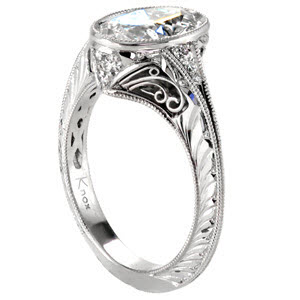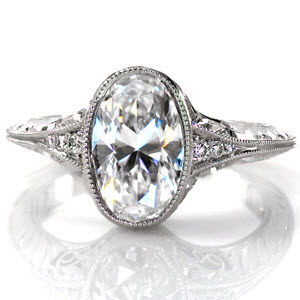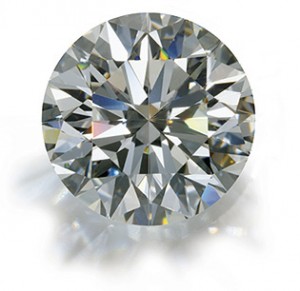You know that unforgettable moment that happens in romantic comedies where everything finally comes together. The scene that takes your breath away as the couple stands under the moonlit sky and you hear the soft rhythmic pattern of the ocean waves crashing to the shore. Then “Charming” gets down on one knee and slowly slides the diamond engagement ring onto her left hand as she squeals in excitement. Just as he asks “will you marry me?” a shooting star appears in the night sky and she replies “yes, yes I’ll marry you!”
After watching this proposal, ever wonder how does one achieve such an epic proposal as this?
Your engagement can be just as picture perfect, and Knox is here to help. With our handcrafted rings made in our Minneapolis production studio you too can achieve that five star approval.
Imagine it’s 4th of July sitting on a blanket in Nicolette Island Park in Minneapolis while fireworks light up the night as you ask the one you love to marry you. You place the Knox ring onto her left hand and she is overcome with emotion. She has never seen a more beautiful ring in her life!
The search begins, after browsing through the Knox Jewelers website you have found the most unique engagement ring ever! It is an antique inspired design that has custom platinum filigree and wheat pattern hand engraving. Scrolling through the list of center stone options you do your best at interpreting diamond quality but the grading scale seems a bit foreign.


To understand this diamond language, let us first explore the background on how diamond grading was established. GIA, known as the Gemological Institute of America, was first established in Los Angeles in 1931 as the first U.S. laboratory and school. GIA continued its advances in gemology with its contribution to the jeweler’s loupe, a small hand held magnified lens used to view diamonds and gems more closely. They also patented the first gemological microscope used in most jewelery stores today. In the 1950’s GIA created the diamond grading system that is know as the 4C’s. Broken down into 4 parts, a diamond is graded on its cut, color, clarity, and carat weight.
Although most laboratories use the same 4C’s grading sale they do not always practice the same level of quality. GIA known for its high standards in stone grading and their continued contribution to gemology they became the “world’s foremost authority” in the jewelry industry. With this high regard in the industry, Knox strongly values the GIA standard and sell mostly GIA diamonds.
With this general knowledge on how the 4C’s were created you’re ready to venture into diamond shape. Commonly confused with cut, shape refers to the outline and contour of a stone. The modern round brilliant was first developed in 1919 by Marcel Tolkowsky. Other shapes were introduced over time and are categorized as fancy brilliants or step cuts. Fancy brilliant, a modified shape of the round brilliant, include princess, radiant, cushion, marquise, oval, pear and heart. Step cut refers to either emerald or asscher and these cuts have parallel concentric planes that resemble a stair-step pattern.
Created elusively for the modern round brilliant, the cut grade focuses on how light strikes a diamond. This relationship of light return is based on specific angles and percentages to maximize the beauty of a stone. The white light that reflects internally and externally in a diamond is brilliance. Fire is the prism of colors you see when light hits the diamond and scintillation is the flash of light that emits from movement. A well cut diamond will attribute to these three desired qualities in its overall appeal of the stone. While other diamond shapes do not have a cut grade they are valued on the bases of polish and symmetry. Cut grade is evaluated as Excellent, Very Good, Good, Fair and Poor. Knox believes in the importance of the cut grade standard and here are the recommended ranges:
- Round Brilliant: Excellent or Very Good
- Fancy Brilliants (Polish and Symmetry): Good or better
- Step Cuts (Polish and Symmetry): Good or better

The color scale was developed on the sequence of the alphabet, however it begins at D and then extends to Z. This scale is rated on the absence or presence of color in a diamond, typically tints of yellow or brown. From colorless, D-F, to near colorless G-J, and the rest falling into faint, very light, or light. When selecting color a round brilliant will hide a diamond’s body color better than a fancy brilliant or step cut. At Knox our recommended ranges where quality meets value is as follows:
- Round Brilliant: F through I
- Fancy Brilliants: F through H
- Step Cuts: F through H
Clarity is essentially the fingerprint of a diamond; it looks at the internal and external areas of the stone and the characteristics it contains. These clarity characteristics are features that result during the formation of a diamond. A diamond grows under extreme heat and pressure and as it develops it can trap small crystals or its atomic structure creates a variety of irregularities within the diamond. GIA evaluates clarity from the top of the scale of flawless all the way down to included. When selecting a clarity grade, brilliant cuts will hide clarity features better than step cuts. Our recommended value range where clarity does not distract from the beauty, is as follows:
- Round Brilliants: VS1 through SI1
- Fancy Brilliants: VS1 through SI1
- Step Cuts: VVS1 through VS1
The last “C” is carat weight; this measurement is based on the mass of the diamond. A one carat diamond is equal to 200 milligrams in weight. Carats are divided into points; one carat equals 100 points. Similar to 50 points for 0.50 carat and 25 points for a 0.25 carat diamond. The term “magic size” is referred to diamond sizes that are intervals of 0.25, such as 0.25 carat, 0.50 carat, 0.75 carat and 1.0 carat. To the naked eye a 0.99 carat to a 1.0 carat might not be noticeable but the differences in price can be quite significant. At Knox we recommend looking for diamonds based on the millimeter dimensions as apposed to the carat weight. Finding a diamond under that magic size but measures the same can mean big savings for you.
With a basic understanding of the 4C’s, the journey continues! After thorough investigation on our website you’ve narrowed it down to two stones. Viewing these two diamonds in the new Knox Woodbury location you’ve selected a favorite. The crafting of your ring has started and you wait in anticipation as each photo is sent to you via our new “Creation of an Heirloom” photo system. This program captures each pivotal moment as your ring comes to life. You watch the unique perspective of your ring being created, a true Minnesota made work of art!
With the ring tucked securely in your pocket the day begins to unfold. Hand in hand you walk the shores of Stillwater and come across a message in a bottle. As your true love unfolds the rolled up note and reads the message “Will You Marry Me?” you slowly get down on one knee and present her with your Knox ring. She gasps in amazement, her eyes flood with tears, and she exclaims “Yes, I’ll marry you!”
Congratulations, you’ve just achieved an epic proposal! Okay, so the Knox ring part was true, but your story was a little different. If so, tell us how it really played out in the comments below. At Knox we love the happily ever after stories!

